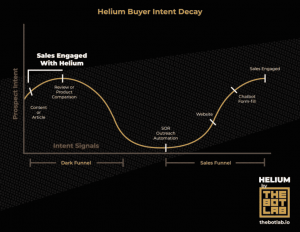— February 28, 2018

mcmurryjulie / Pixabay
Yellow Light Of Performance
Let’s face it, at some point we all have had that moment of panic at a stop light. We see a yellow appear and spend the next few seconds choosing to slow down and stop or speed up and make it through. It’s the same way with performance reviews. As a manager, you make the choice to slow down and really evaluate each employee, focusing on individual accomplishments and contributions… Or, you choose to go a faster route. Determining performance in a less personalized approach, without a doubt missing details and potentially lowering employee productivity. Some managers even default to ranking employees as they compare to one another, also called the “rank and yank” system. Manager and employee alike loathe performance reviews. They are awkward, stressful and in most cases, disengaging.
Reviews are costly for both the company and the employee. We spend thousands, or in some cases, millions of dollars on a meeting typically guided by human memory and impression. An Inc.com survey of between 100 employees and 100 managers found that performance reviews hinder their teams work and have quite a few flaws:
- Too time-consuming: Managers (31%), Employees (17%)
- One-way conversation: Managers (12%), Employees (9%)
- Manager can be biased: Managers (9%), Employees (11%)
- Objectives are mismatched: Managers (9%), Employees (5%)
- Only focus on the negative: Managers (8%), Employees (9%)
- No follow-up given: Managers (8%), Employees (9%)
- No feedback given: Managers (7%), Employees (8%)
- Blindsided by results: Managers (4%), Employees (5%)
- Issues are discussed too late: Managers (4%), Employees (8%)
- Only discuss recent topics: Managers (4%), Employees (9%)
- Based on anecdotal memory: Managers (4%), Employees (8%)
All of this has lead some organizations to completely do away with reviews to instead experiment with what works best for their company and employees.
Green Light (Means Go)
Explore the idea of having feedback or “reviews” on a daily, weekly, monthly basis. Seem like too much? It’s not as far fetched as you might think. More and more companies are taking part in throwing out the old way of evaluating, instead implementing a combination of performance meetings, ongoing feedback and other performance management techniques. Taking a more specialized approach to performance reviews and management has helped improve employee culture, engagement and relationships among managers and their teams.
Still think a once a year meeting is less time-consuming? This new way is actually quite effective, and when organized well, can be less overwhelming than the annual review. We put together a few different ways you can start implementing these techniques in your company right away. So here’s your green light. GO:
Microfeedback
Using microfeedback to evaluate an employee’s work on a weekly, biweekly or monthly basis will help create a better understanding of what’s expected. It can also help prevent any mistakes that could arise during a project before it’s too late.
Set Time Aside
I’m too busy. That’s an excuse we all use more often, than not. But are we too busy to help improve our company and employees? By setting aside time in your weekly schedule to help give feedback to your teams and employees, you will start to see performance quality improve. In fact, 78% of employees said being recognized helps motivate them. This shows your team that you genuinely care about their work and performance, creating stronger relationships among co-workers.
Grab your pen and paper
Next time you talk to your employees or teams, take notes. This may seem like a no brainer, but this is often overlooked. Keeping track of all your employees comments as well as what YOU say can be overwhelming and quite frankly difficult to remember. Simply jot down thoughts, ideas and goals developed during brainstorming sessions.
Coach your team
Being a coach doesn’t mean you have one practice and you’re set for the season. Same goes with being a manager and giving feedback. Giving continuous feedback helps your employees stay on track with goals and expectations. It also helps you keep track of your own work. As a manager (coach), you have a lot of the answers and your team needs your input and evaluation consistently. Give a little feedback and watch your team achieve consistent performance.
Business & Finance Articles on Business 2 Community
(50)
Report Post







